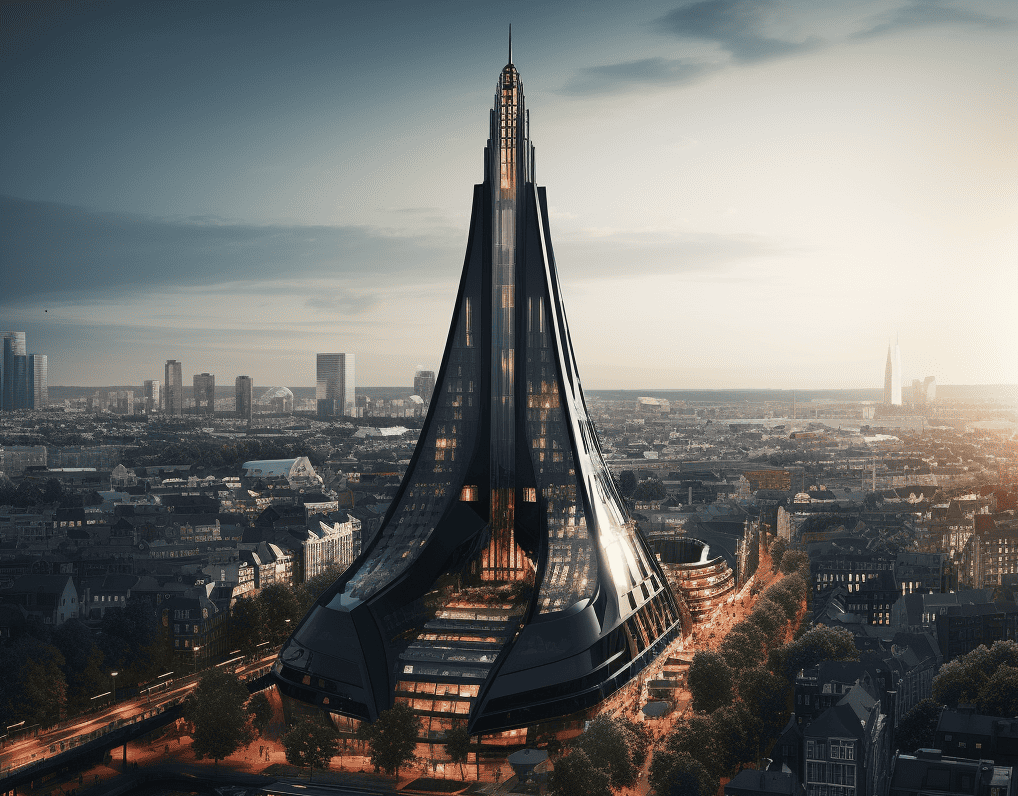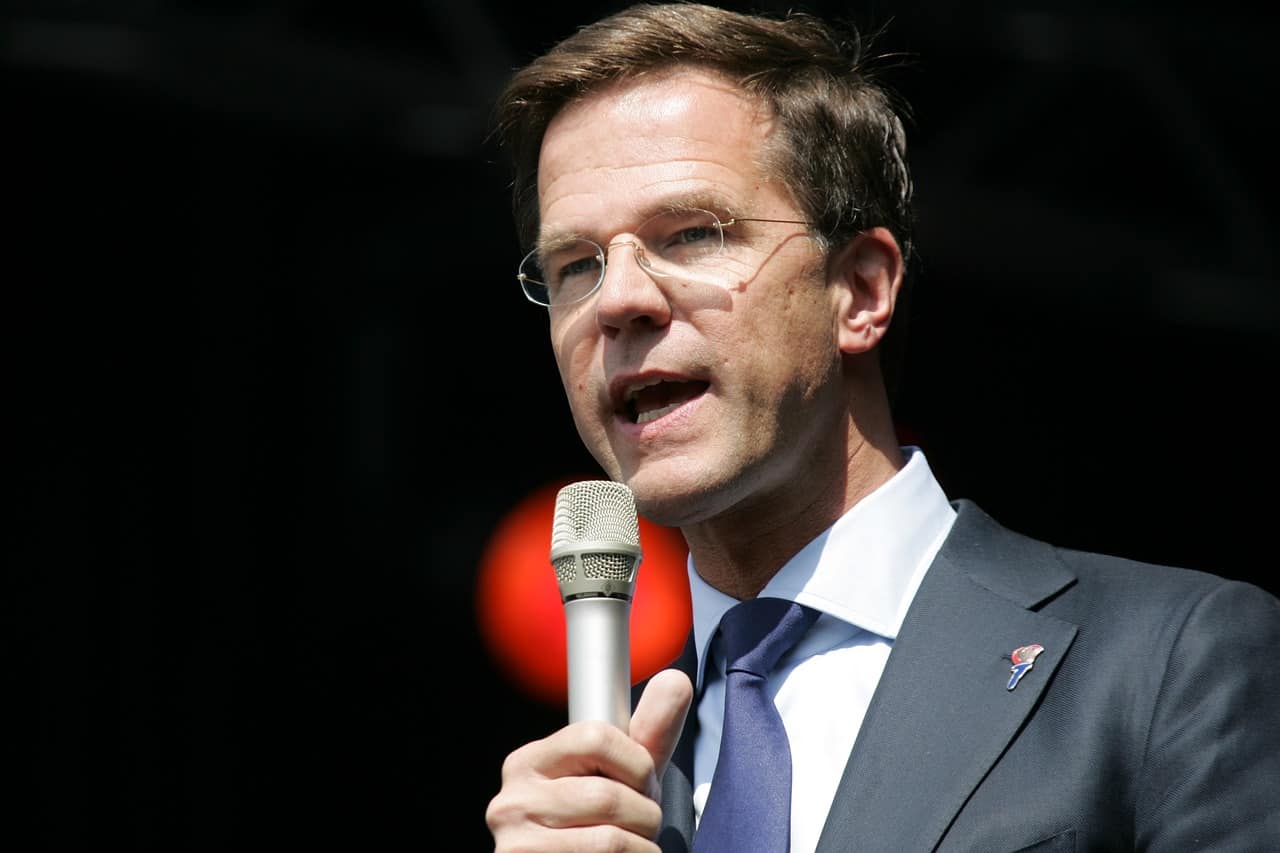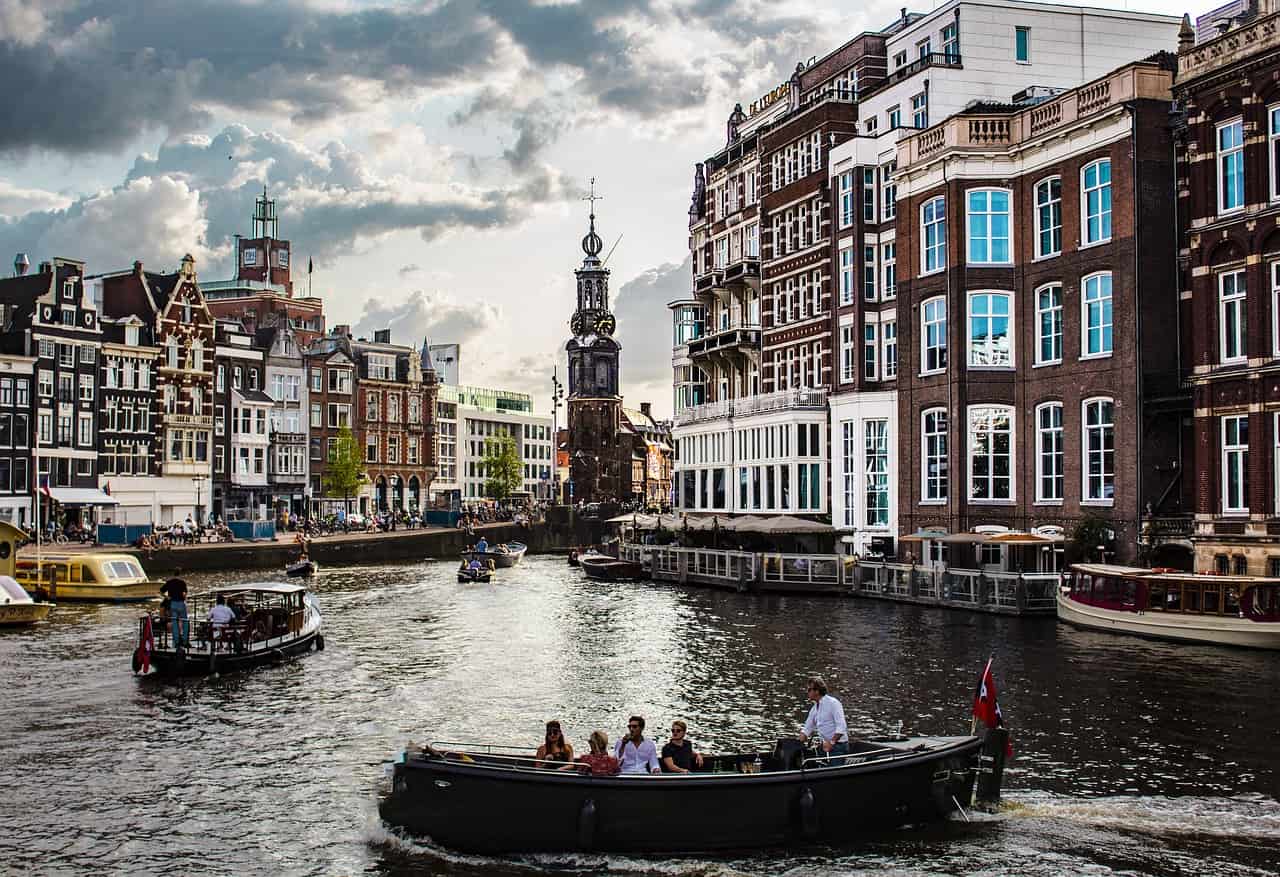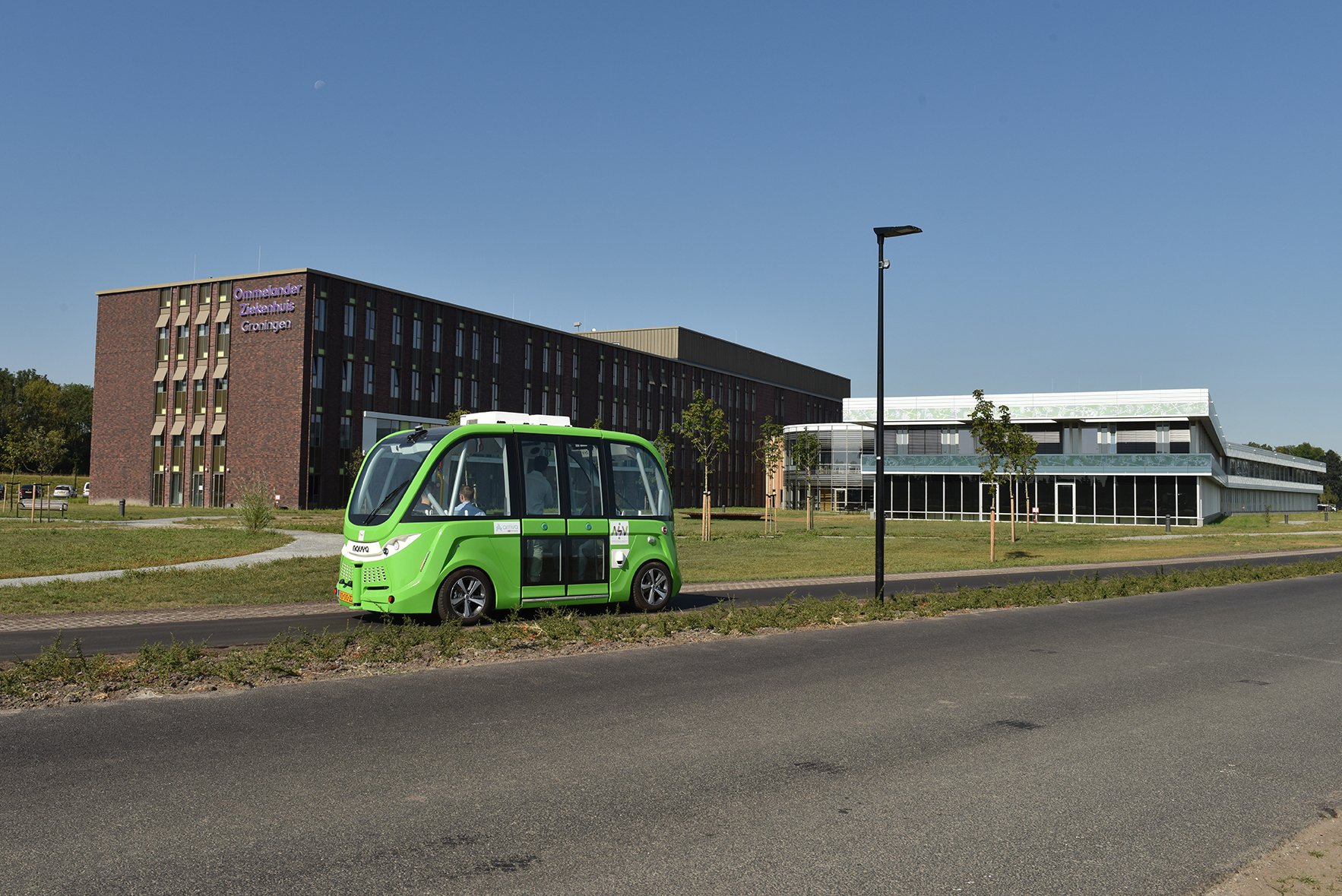
A ferry without a skipper on board or a train without a driver: it sounds like a pipe dream, but Groningen and the Northern Netherlands as a region are innovating intensively with self-driving transport. One example is a new project planned for next year: “If things go according to plan, an autonomous ferry will sail near Drachten next year, thanks in particular to a group of companies,” says Daniël Koelikamp, Program Leader for Smart and Green Mobility in the Province of Groningen.
It all started in 2016 when tests were conducted in Appelscha with an autonomous shuttle, a small, red, eight-person e-van. The Northern Netherlands is currently the only region in Europe that has projects revolving around autonomous transport with all modes of transport – road, rail, air and water. One more will be added next year when the construction of the first European Hyperloop Center in Groningen is launched.
Self-driving vans
It is no coincidence that the north is leading the way when it comes to autonomous transport, Koelikamp explains. “In Groningen, in addition to being a big city, we also have a lot of rural areas where people live in small villages far apart from each other,” he says. “It is difficult to provide good public transport in these areas. The small buses that drive around often cover long distances, while few people use them. Plus, there is a shortage of bus drivers. In the future, this situation may get even worse due to an aging population. How convenient would it be if you could indicate in an app where you are and then an autonomous van would drive you from point A to point B?”
In Bourtange and Midden-Groningen, trials with self-driving vans are still planned. In Bourtange, shuttles are used to take passengers to the center of the fortress, a popular tourist destination. It is also being researched whether they can be used to deliver packages. The tests are a follow-up to earlier similar tests, including in Scheemda.
To expand autonomous road traffic, vehicles still need to be optimized. So far, self-driving buses have been tested on the road up to 20 kilometers per hour. “But in rural areas, buses must be able to travel at least 50 kilometers per hour. We now need to look at how we can optimize the sensors in the vehicles so that they can recognize objects more easily.” But high speeds have already been achieved with a small, self-driving passenger car in Groningen, when a Renault Twizy reached a speed of 70 kilometers per hour.
Drones and medicine
Airborne innovation is another way to ensure that Groningen’s rural residents are better connected to urban areas and to better distribute crowds in cities. Five field labs (one per means of transport) were recently launched in Groningen to test, further develop and scale up autonomous transport. This was carried out together with companies and knowledge institutions, including at the Zerniketerrein, Eemshaven and Eelde Airport. “We have been testing drones at Eelde Airport, among other places, for two years. Initially, you have to think mainly about tests with goods transport, such as medication. Transporting this via the air is of course very efficient and can be used, for example, when medication is urgently needed on the Wadden Islands or in rural areas. Later on, transporting people may also follow.”
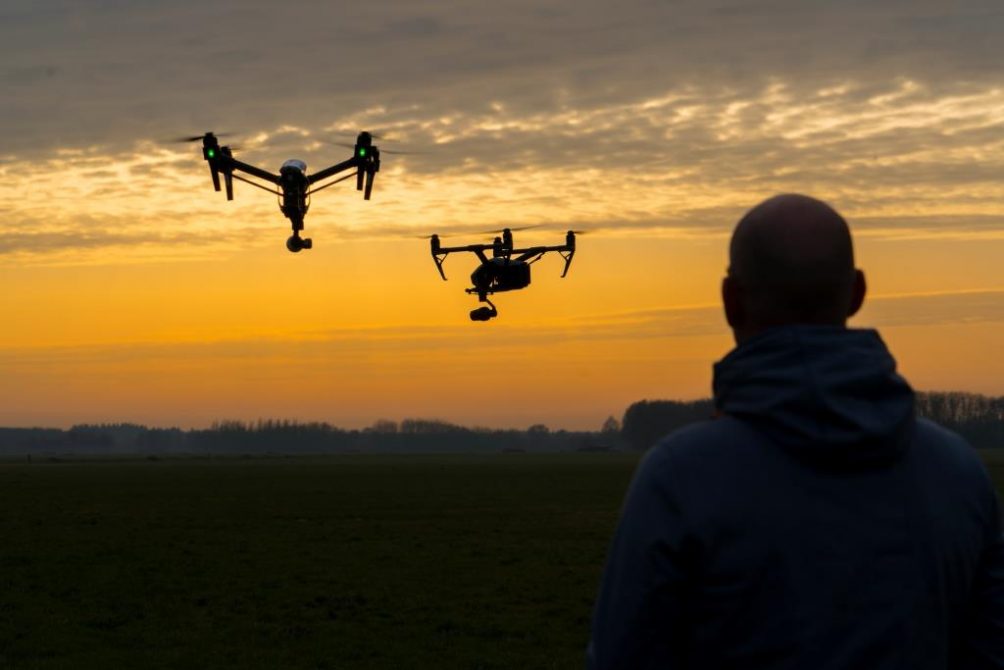
At the Eelde Airport in Groningen, technological improvements to drones are one of the things being looked at. “For one thing, they must be able to fly longer distances than what is currently possible,” says Koelikamp. It’s still in its infancy, but a new secondary vocational education course at the Noorderpoort regional education center will soon contribute as well. “Noorderpoort will launch a four-year course to train students to be all-around drone experts. This is important because the knowledge we gain must also be applied in practice on a daily basis. This course will make that a reality.”
A ferry without a skipper
At Eemshaven, projects involving autonomous ships are being carried out. Koelikamp explains what the innovations on the water look like. “The water at Eemshaven is shallow, so boats must be piloted through it using gauge boats that analyze how deep the water is. These boats could be run autonomously. The next step will be to pilot the boats themselves autonomously or to manage and maintain wind farms at sea with autonomous boats. We are looking at the options with the Offshore Wind Innovation Center in Eemshaven and Groningen Seaports.”
Passenger transport on the water is not lagging behind in Groningen, either. “A group of companies is looking at whether we can make the ferry near Drachten autonomous.” It involves a bicycle ferry between De Wilgen and Opeinde. “This month a report on that will be presented. If all goes well, the ferry can start operating as early as next year.”
Autonomous trains
In Groningen and Friesland, the first steps have already been taken on the railroads to make self-driving train traffic possible in the future. Some 270 kilometers of track in the provinces will receive a digital track safety system called the European Rail Traffic Management System (ERMTS) within 10 years. The system will make the railroads safer and, in combination with ATO (Automatic Train Operation), provide more control over how fast vehicles drive and brake. It will also enable trains to run closer together on the same track. “You can compare it a bit to cruise control in the car,” Koelikamp says. “The starting procedure is still done by the driver, but then the system takes over.”
The new system provides several advantages. “It allows us to generate more capacity on tracks towards the city in the busy rush hours without additional measures or with much less expensive ones, such as laying an additional track. We can also start to focus on faster connecting transport, such as a faster train line between Groningen and Leeuwarden, Winschoten or Delfzijl.” The ‘cruise control’ also ensures energy savings. “Each driver operates the train slightly differently. Programmed trains always run in the same way and you can set them to run as efficiently as possible. That’s a big additional benefit because it saves fuel.”
It’s going to be a while before trains operate without a driver taking control. But operating trains entirely without a driver is not necessarily our goal, either. “Our goal is to equip initial trains with ATO at the ‘cruise control’ level by 2025. I don’t think we’ll be able to take steps toward fully autonomous trains until after 2035.”
An automatic bus wash
Koelikamp is looking forward to next year to the time when the project with the self-driving Renault Twizy will be followed up. “We want to start looking together with the Qbuzz transport company at automating a bus wash by deploying the technology we developed in the Twizy for 18 meter long buses.” The bus wash is an excellent test environment for this: “There is little interaction between vehicles and the buses drive around at relatively low speeds. So it’s the ideal place to carry out tests.”
Read other IO articles about Groningen here.


